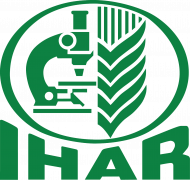Abstract
In potato cultivation, the problem of controlling broadleaf weeds could be solved with the production of plants resistant to the broadleaf herbicide bentazone. Plant tissue culture technology and herbicide screening technology were used to select bentazone-resistant potato materials and to analyse the physiological and biochemical characteristics of their resistance. Potato microtubers were used as explants. Results showed that the optimum medium for screening the resistance was the Murashige and Skoog medium + 1 mg/L indoleacetic acid + 4 mg/L zeatin + 60 mg/L bentazone (pH 5.8). Forty-one regenerated buds were obtained by screening culture. After treatment with 48% bentazone aqueous solution (700 mg/L and 1296 g a.i./ha), one resistant product was obtained. Exposure to bentazone (1296 g a.i./ha) reduced the physiological indices of both the resistant and control potato plants. However, compared with control, the photosynthetic indices and acetyl-CoA carboxylase activity of resistant selection only decreased slightly and increased significantly from the lowest level, and the content of malondialdehyde, an indicator of plant stress, was also less affected.















